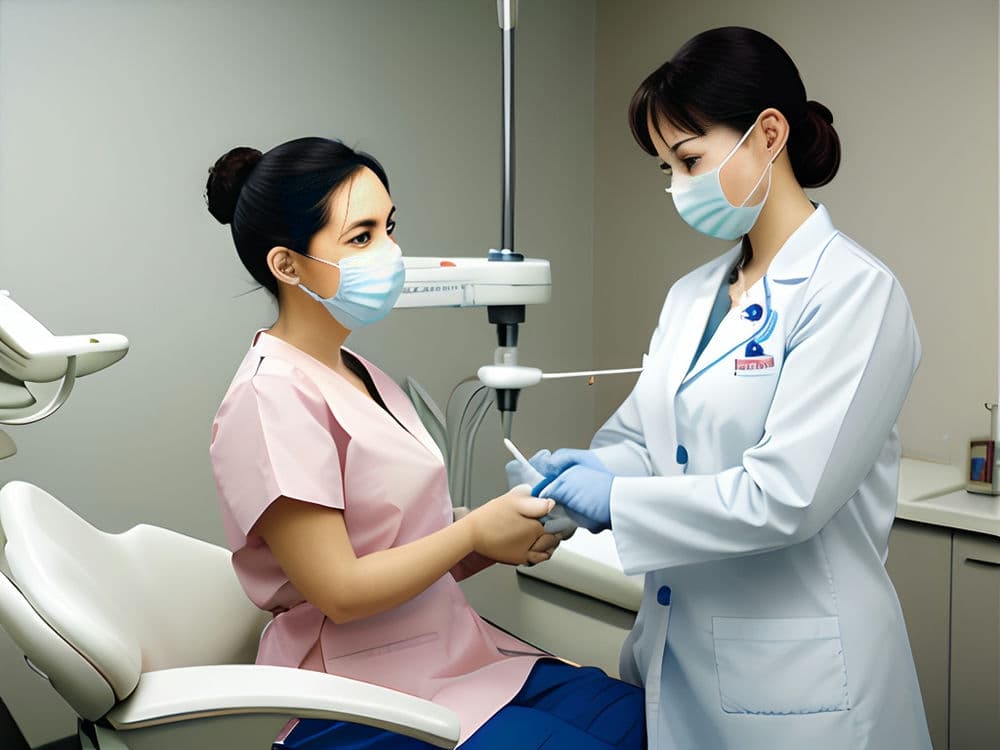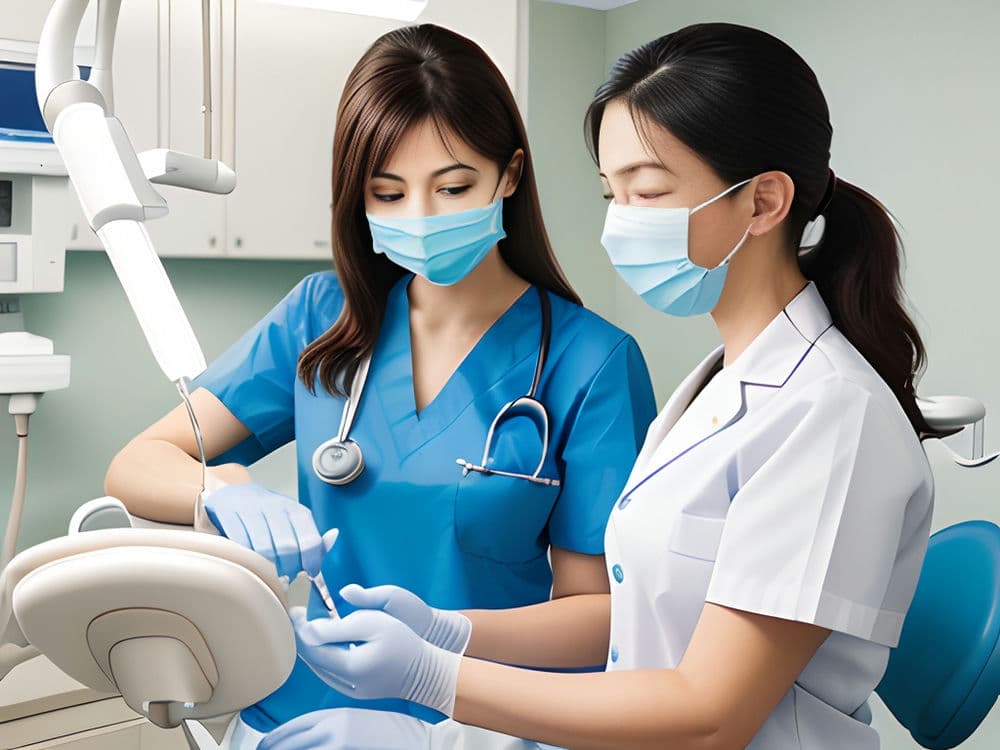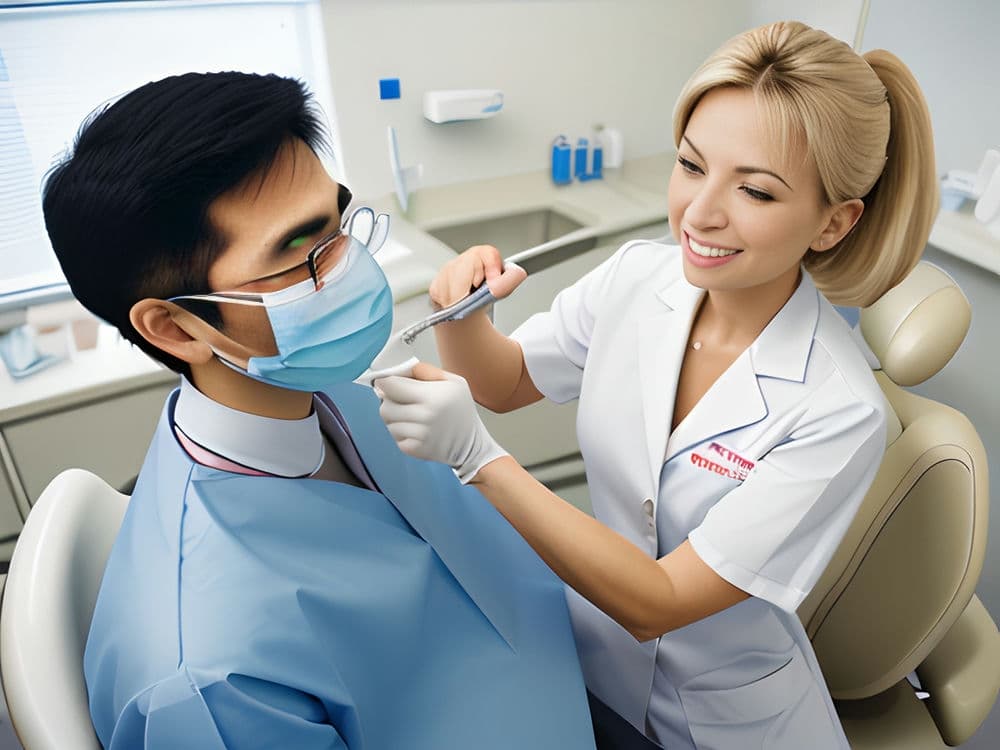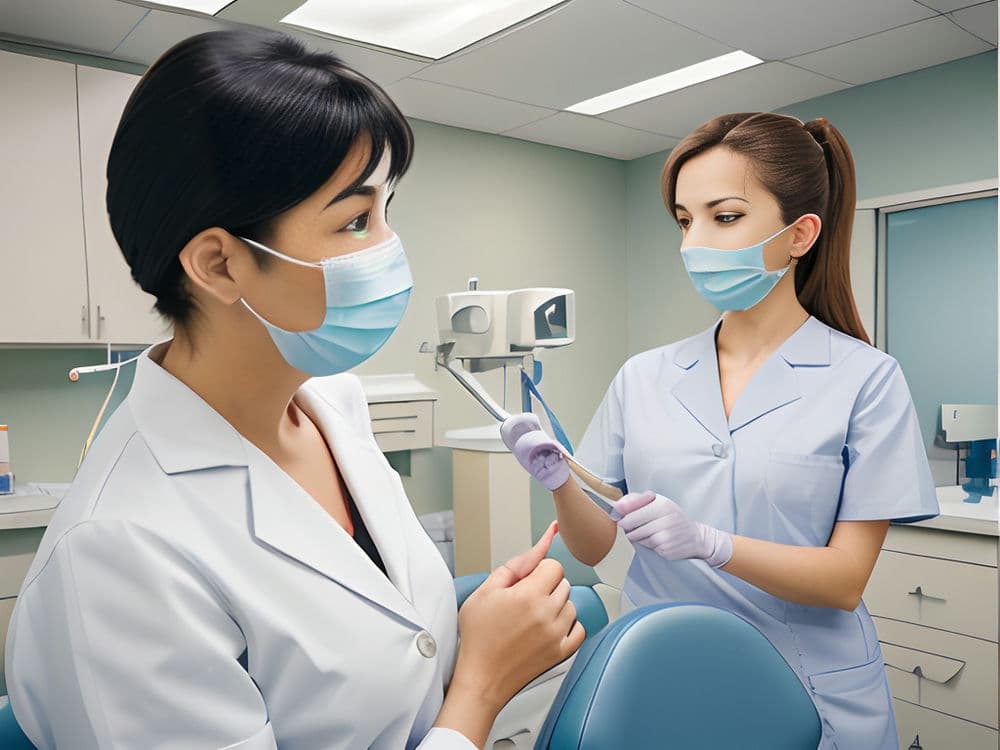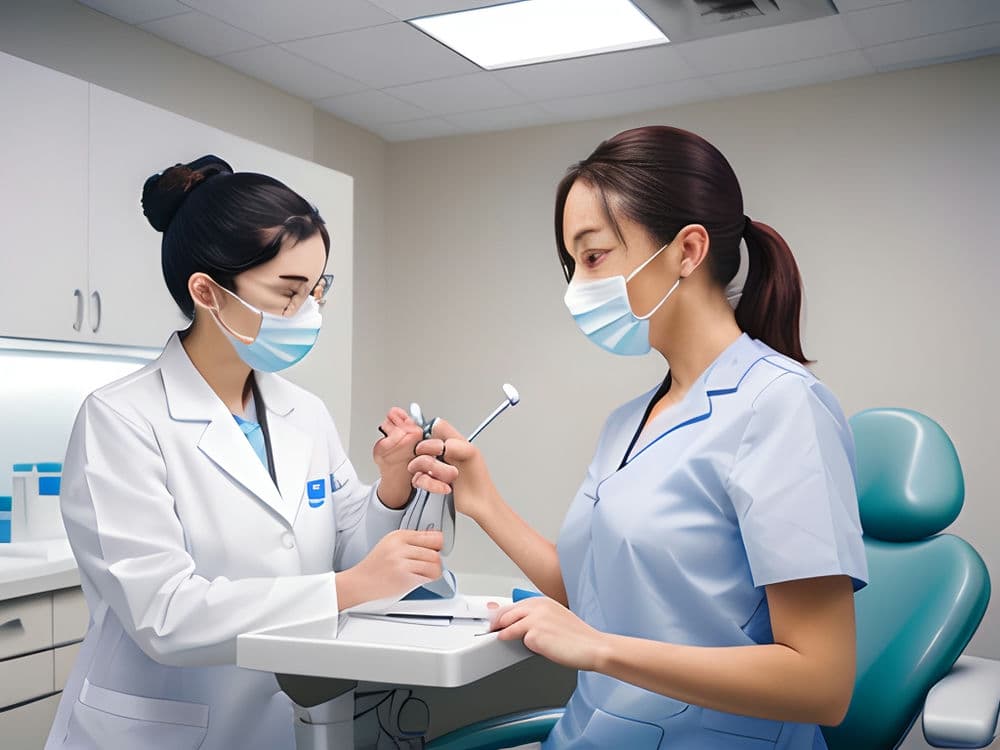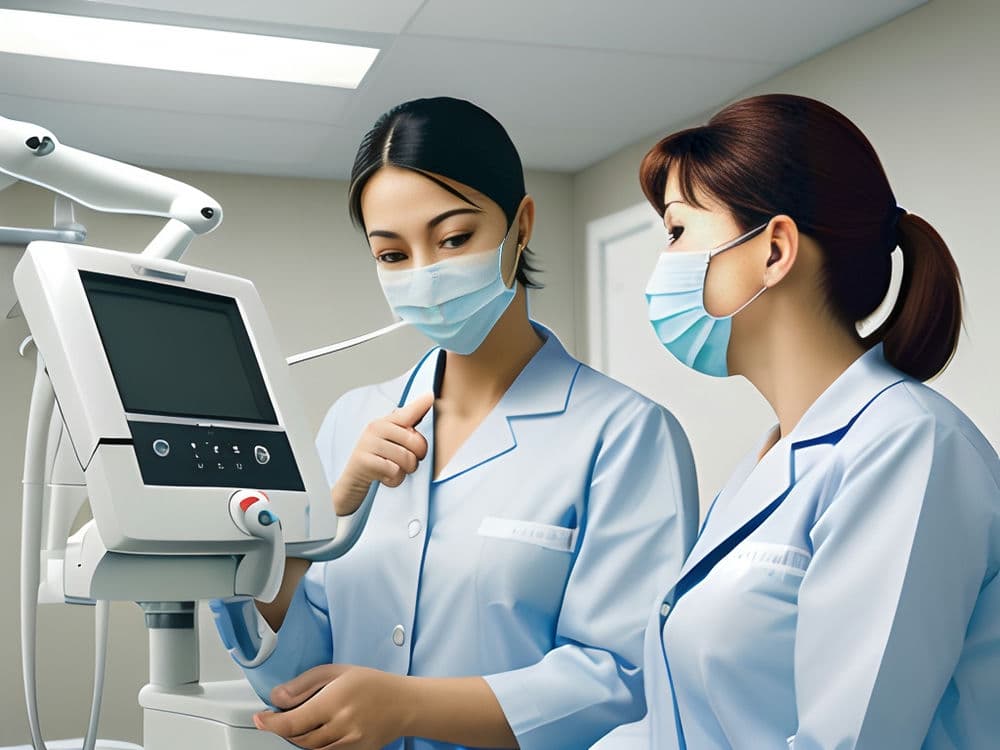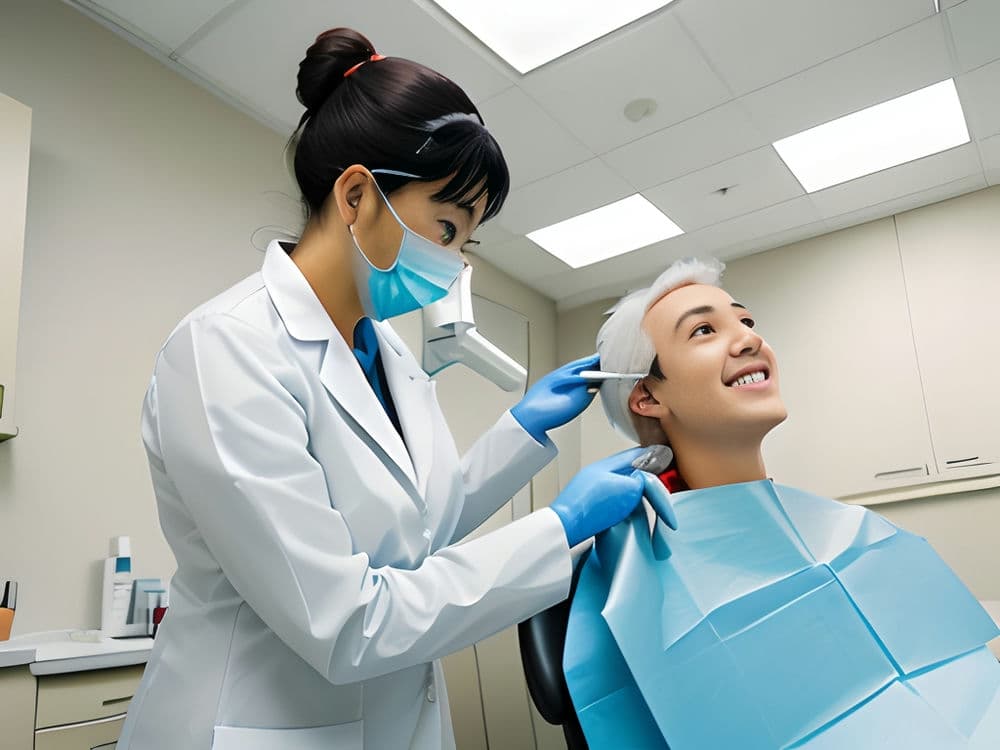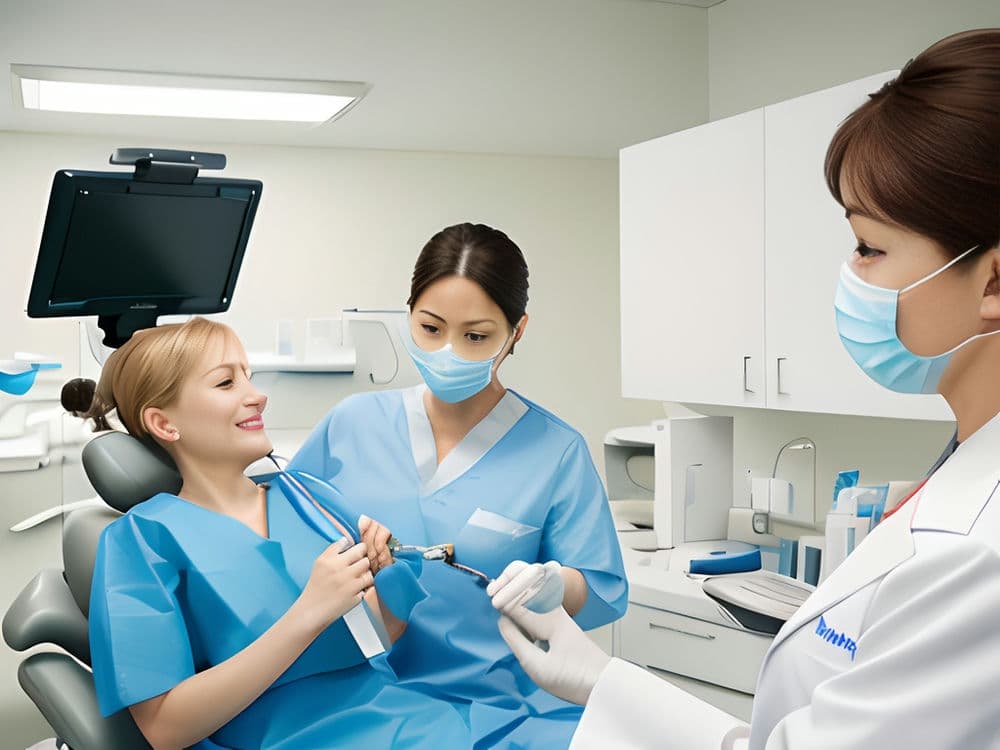Advances in Genomic Technologies Enhancing Orthodontic Diagnosis: The Role of Genetics in Future Orthodontic Treatments
The burgeoning field of genomics is revolutionizing many aspects of medicine, including orthodontics. As we delve deeper into the human genome, we uncover intricate details that influence not only our general health but also the development and alignment of our teeth and jaws. This essay explores how cutting-edge genomic technologies are poised to transform orthodontic diagnosis and pave the way for treatments more tailored to individual genetic profiles.
Traditionally, orthodontists relied on visual examinations, plaster models, and two-dimensional radiographs to diagnose malocclusions and devise treatment plans. However, these methods offer a limited perspective on the multifaceted nature of oral structures. With the advent of high-throughput sequencing techniques and powerful bioinformatics tools, it is now possible to decode an individual's genetic blueprint with remarkable precision – a process that was once time-consuming and prohibitively expensive.
Genetic research has identified numerous genes implicated in craniofacial development, such as those affecting tooth size, jaw growth patterns, and susceptibilities to dental malformations or periodontal disease. By integrating genomic data into diagnostic processes, orthodontists can gain invaluable insights into a patient's predisposition towards certain conditions that may affect treatment outcomes.
For instance, if genomic screening reveals a tendency towards delayed tooth eruption or heightened risk for root resorption during orthodontic movement, practitioners can adjust their approaches accordingly – perhaps by employing gentler forces or monitoring progress more closely. This personalized strategy not only increases the efficacy of interventions but also minimizes potential complications.
Furthermore, understanding the genetic components influencing facial aesthetics could guide clinicians in achieving results that are harmonious with each patient’s unique genetic makeup. For example, someone with a hereditary disposition for a pronounced chin might benefit from a different treatment plan than an individual whose genetics indicate a tendency towards minimal chin projection.
In addition to enhancing diagnosis and treatment planning capabilities, advances in genomics could foster preventive measures within orthodontics. Genetic profiling might someday enable early identification of children at high risk for developing complex malocclusions; timely intervention could then mitigate or even prevent some issues from manifesting fully.
As ethical considerations remain paramount when dealing with genetic information—concerns about privacy protection and discrimination based on genetic traits must be vigilantly addressed—it is clear that responsible integration of these technologies will be crucial.
In conclusion, advances in genomic technologies hold immense potential for enriching orthodontic diagnosis and tailoring future treatments to patients’ unique genetic profiles. These developments promise more effective care delivery while opening new vistas for preventative strategies in dentofacial health management. As researchers continue unraveling the complex web of genetics influencing craniofacial morphology and pathology, one thing becomes certain: genetics will play an increasingly significant role in shaping the future landscape of orthodontics.
The Role of Genetics in Future Orthodontic Treatments: A Vision through the Lens of GWAS
In the realm of orthodontics, a field traditionally focused on mechanical correction of dental irregularities, a transformative wave is emerging. This sea change is powered by the burgeoning science of genomics, especially through genome-wide association studies (GWAS). By surveying the vast expanse of genetic variation across populations, GWAS provide an unprecedented tool for unraveling the complex tapestry woven by genes that influence craniofacial development and orthodontic outcomes.
Traditionally, orthodontists have relied upon visual assessments and physical measurements to diagnose and plan treatments. However, this approach may be significantly enhanced as we begin to integrate genetic insights into clinical practice. With GWAS pinpointing specific genetic markers associated with malocclusions – such as overbites, underbites, crowding, and spacing issues – practitioners can anticipate and tailor interventions more precisely.
Imagine a future where prior to braces or aligners being recommended, patients undergo genetic screening. Such preemptive analysis could reveal susceptibilities to certain conditions that may affect treatment choice or duration. For instance, individuals with a predisposition towards faster bone remodeling might benefit from accelerated orthodontic techniques. Conversely, those with a heightened risk for root resorption could receive gentler approaches to minimize potential complications.
Furthermore, GWAS findings could contribute to personalized retention strategies post-treatment. Certain genotypes might suggest a likelihood of teeth reverting to their pre-treatment positions; armed with this knowledge, orthodontists could design long-term retention plans that are both effective and individualized.
Moreover, there's potential for GWAS to aid in predicting how well patients will respond to different types of orthodontic appliances. Some individuals might have genetic variants that correlate with better outcomes using traditional metal braces versus clear aligners or vice versa. This level of customization not only enhances treatment efficacy but also patient satisfaction.
Yet challenges remain before these possibilities become commonplace realities in an orthodontist's office. Ethical considerations regarding genetic testing must be navigated carefully; privacy concerns and potential discrimination based on genetic information necessitate stringent safeguards.
Additionally, while GWAS offer compelling correlations between genes and traits they do not establish causation conclusively nor account for environmental factors which play significant roles in oral health.
Thus interdisciplinary collaboration becomes imperative as researchers strive to paint a fuller picture blending genetics lifestyle socioeconomic status into comprehensive models guiding future care.
Indeed embracing genetics heralds an exciting chapter within dentistry one where precision medicine intersects with traditional mechanical methodologies offering prospects more nuanced efficacious treatments tailored not just teeth jaws but underlying hereditary blueprints shaping them.
As science progresses so too must our understanding appreciation complexity human biology its implications healthcare including specialty like orthodontics Where once we saw mere alignment now glimpse deeper dynamics at play intricacies awaiting exploration harmonization within fabric clinical practice Thus dawn era personalized medicine dawns bright horizon beckoning us toward smarter kinder more informed way caring smiles tomorrow
Predictive analytics and risk assessment are revolutionizing the way we approach healthcare, including orthodontics. With malocclusions—misalignments of the teeth and jaw—being a common issue, understanding the role genetics plays is crucial for future treatments.
Genetic factors can predispose individuals to various forms of malocclusion, such as overbite, underbite, crossbite, or crowding. By analyzing an individual's genetic makeup, predictive analytics can forecast the likelihood of these conditions developing. This information is incredibly valuable as it allows for early intervention strategies that can mitigate severity or even prevent certain dental issues from manifesting.
As we delve deeper into the genomic era, orthodontists will likely have access to comprehensive genetic profiles that could flag potential risks long before physical symptoms appear. This means that in addition to conventional examinations and imaging techniques like X-rays or 3D scans, a patient’s genetic data could be used to tailor more precise and proactive treatment plans.
Risk assessment tools powered by machine learning algorithms are becoming increasingly sophisticated at parsing through large datasets which include genetic information. These tools not only predict the possibility of malocclusions but also help in determining the most effective treatment modalities based on an individual's unique biological blueprint.
Incorporating genetics into orthodontic care isn't without its challenges; ethical considerations around privacy and data security come to mind. Furthermore, while genetics play a significant role in malocclusions, environmental factors such as habits and injuries also contribute significantly to dental health outcomes.
The integration of predictive analytics with a deep understanding of genetic influences holds promise for personalized orthodontic care that is both more efficient and effective. As research progresses and technology advances, we may see a day where braces are designed not just based on current dental alignment but optimized for one's specific genetic risk profile—a truly tailored approach to creating healthy smiles.
The concept of "Gene Editing Techniques: A Future Tool for Preventive Orthodontics?" opens a fascinating door to the potential intersection of genetics and orthodontic care. As science delves deeper into understanding genetic determinants of dental issues, the possibility emerges that future orthodontic treatments could be revolutionized through precision medicine tailored to an individual's genetic makeup.
In traditional orthodontics, practitioners address malocclusions—misalignments of teeth—and other structural problems primarily through mechanical means, such as braces or Invisalign. These methods often involve lengthy treatment times and can sometimes be accompanied by discomfort for the patient. However, they do not directly tackle the underlying genetic factors that predispose individuals to these conditions.
Enter gene editing—a suite of technologies capable of precisely altering DNA sequences within organisms. The most renowned among these is CRISPR-Cas9, which has been likened to molecular scissors for its ability to cut and modify specific regions of the genome with unprecedented accuracy. With advancements in our understanding of the genes responsible for dental development and health, there exists a theoretical future where gene editing could preventively correct predispositions to certain orthodontic issues before they manifest.
Imagine a world where a simple genetic test in early childhood reveals a propensity for overcrowding of teeth or misaligned jaw growth. Instead of waiting until problems develop and then reacting with corrective devices, clinicians might employ targeted gene therapies to adjust those developmental pathways, reducing or even eliminating the need for traditional braces or surgery later on.
Such interventions would likely require careful ethical consideration due to their heritable nature; changes made in germ line cells would pass down through generations. This raises significant questions about consent, accessibility, equity in healthcare delivery, and potential unintended consequences on human evolution.
In addition, our current level of knowledge regarding complex traits like dental alignment is far from complete. Dental phenotypes result from intricate interactions between multiple genes and environmental factors throughout development. Consequently, identifying all genetic contributors—and understanding how they interact—is an ongoing challenge that must be met before gene editing can become a viable tool for preventive orthodontics.
Despite these hurdles, research continues at pace. Discoveries linking specific genes to craniofacial disorders are already informing more precise diagnostics and personalized treatment plans—even without direct gene modification.
In conclusion, while it may currently reside in the realm of scientific speculation rather than clinical practice, the prospect of using gene editing techniques as tools for preventive orthodontics illustrates how genetics could play a crucial role in shaping future treatments. It promises an era where intervention is proactive rather than reactive; however such advances will necessitate rigorous scientific validation coupled with thoughtful ethical deliberation before they can safely transition from laboratory benchtops into dental clinics worldwide.
The Role of Genetics in Future Orthodontic Treatments:
In the realm of genetic engineering, CRISPR-Cas9 emerges as a revolutionary tool with profound implications for orthodontics. This technology enables precise alterations within an organism's DNA, potentially allowing for the customization of dental traits at a fundamental level. Imagine the capability to adjust genes responsible for tooth alignment or jaw growth; such advances could transform orthodontic practices.
CRISPR-Cas9 functions like molecular scissors, snipping DNA strands and permitting scientists to remove or insert specific genetic sequences. Thus, if there were identified mutations leading to malocclusions or other dental issues, CRISPR-Cas9 might correct these anomalies before they manifest physically. This preemptive approach would usher in an era where braces or corrective surgeries become historical relics.
However, ethical considerations loom large over this technology's application in modifying human traits. The boundary between therapeutic interventions and aesthetic enhancements blurs when discussing altering genetic predispositions for non-health-critical characteristics such as tooth size or spacing.
Moreover, while CRISPR-Cas9 offers incredible precision, off-target effects - unintended modifications - may occur. Hence, rigorous testing and regulation must precede any clinical applications within dentistry to ensure safety and efficacy.
In conclusion, envisioning a future where genetics interlaces seamlessly with orthodontics is not far-fetched. CRISPR-Cas9 may one day enable personalized treatments tailored to individual genetic profiles, reducing the need for lengthy orthodontic procedures and ensuring optimal dental health outcomes from birth. As we advance towards this horizon, it remains crucial to navigate the complex ethical terrain associated with altering human genetics while maintaining focus on patient welfare above all else.
Gene editing, a frontier in medical science, holds the promise of revolutionizing orthodontic treatments by potentially correcting dental anomalies at their genetic roots. While the allure of such technological advancements is undeniable, ethical considerations must be meticulously weighed when contemplating gene editing for non-life-threatening conditions like malocclusions or aesthetic dental imperfections.
The primary ethical concern centers around the concept of necessity. Life-altering genetic interventions are typically justified for preventing or curing serious diseases; however, employing such invasive methods for cosmetic or convenience-based reasons provokes intense debate. Should we tamper with the fundamental building blocks of life to straighten teeth when conventional braces can achieve similar results without altering one's DNA?
Another consideration is that of consent. Future generations would bear the consequences and benefits of genetic alterations made today without having a say in those decisions. Unlike a set of braces that can be removed if undesired, genetic modifications are permanent and heritable, affecting not just an individual but their offspring as well.
Furthermore, there exists the potential for social inequality. If gene editing becomes available only to those who can afford it, we risk creating a society where genetic haves are distinguished from have-nots based on their ability to pay for enhanced traits – including perfect smiles – thereby exacerbating existing socioeconomic disparities.
In addition, unintended consequences loom over this technology like specters at the feast. Our understanding of genetics is still incomplete; thus, interventions might lead to unforeseen health issues or complications beyond the targeted orthodontic outcomes. This poses significant risks which become moral quandaries when applied outside life-saving contexts.
Moreover, there is a fear that normalizing gene editing for cosmetic purposes could lead down a slippery slope towards designer babies and eugenics-like scenarios where certain traits are valued over others in ways that reinforce discrimination and prejudice.
To reconcile these concerns with the potential benefits of gene editing in orthodontics requires robust dialogue among scientists, ethicists, policymakers, and the public at large. International consensus on guidelines and regulations is paramount to ensure ethical standards are maintained while exploring these new frontiers responsibly.
In conclusion, while gene editing offers tantalizing possibilities for future orthodontic treatments, its application raises profound ethical questions when considered for non-life-threatening conditions. The balance between innovation and moral responsibility must guide our approach to integrating genetics into orthodontic care lest we forget our humanity in pursuit of perfection.
The concept of personalized treatment planning based on genetic profiles is a paradigm shift in the field of orthodontics. As we peer into the future, it's clear that genetics will play an increasingly pivotal role in tailoring orthodontic treatments to individual patients.
Traditionally, orthodontists have relied upon clinical observations and past experiences to inform their treatment strategies. However, this one-size-fits-all approach often overlooks the unique variations in each patient's genetic makeup that can significantly influence tooth movement and stability, as well as susceptibility to dental diseases.
Enter genomics – the study of an individual’s genes and their functions. As genomic sequencing becomes more accessible and affordable, orthodontists can now consider a person’s specific genetic characteristics when developing a treatment plan. This means that instead of using standard protocols, practitioners can predict how a patient might respond to certain orthodontic interventions.
For instance, some individuals may possess genetic markers associated with rapid or extensive tooth movement when braces are applied. Understanding these markers could allow for more precise control over treatment duration and intensity. Conversely, other patients may be genetically predisposed to relapse after braces are removed; recognizing this risk could lead to proactive measures such as longer retention periods or alternative methods of maintaining tooth position post-treatment.
Moreover, genetics can also reveal susceptibilities to conditions like periodontal disease or enamel hypoplasia that affect oral health and the success of orthodontic procedures. By identifying these risks early on, orthodontists can collaborate with dentists and other specialists to manage them before they become problematic during or after orthodontic care.
Personalized treatment planning has profound implications for patient satisfaction and outcomes. When treatments align closely with an individual's biology, not only does it enhance efficiency by potentially reducing unnecessary procedures or adjustments but also improves adherence since patients are likely experiencing optimized results from their perspective treatments.
In conclusion, incorporating genetic profiles into treatment planning stands at the forefront of modernizing orthodontics. It promises a future where every smile is not just straighter but healthier too – shaped meticulously by the blueprint within our DNA. The integration of genetics into routine practice may still be on the horizon, but its potential impact on personalized care is undeniable and exciting for both practitioners and patients alike.
The concept of customizing orthodontic care utilizing personal genetic data heralds a transformative era in dental medicine. Orthodontics, traditionally guided by clinical observations and mechanical principles, now peeks into the molecular underpinnings of dental structures. The understanding that genetics significantly influences oral development and tooth movement opens exciting avenues for bespoke treatments.
Genetic testing can unveil individual susceptibilities to certain malocclusions or predict the responsiveness to orthodontic interventions. For instance, variations in genes that regulate bone remodeling could inform the aggressiveness of force application during brace adjustments. Similarly, propensities towards rapid relapse post-treatment might be forecasted, allowing preemptive stabilization strategies.
Incorporating genetic insights not only bolsters treatment efficacy but also elevates patient experience by minimizing trial-and-error approaches. Patients with a predisposition for slower tooth migration may benefit from tailored timelines and specialized appliances designed to accommodate their unique biological rhythms.
Moreover, genetics holds promise in mitigating risks associated with orthodontic procedures. A patient’s genomic profile could flag potential adverse reactions to materials used in braces or aligners, prompting the selection of biocompatible alternatives ahead of time.
However, ethical considerations loom large as we navigate this new frontier. Privacy concerns regarding genetic information must be addressed with stringent safeguards against discrimination or misuse. Furthermore, access to such advanced diagnostics should be equitable to prevent widening disparities in healthcare outcomes.
As research unfolds and technology matures, genetics will likely become an integral part of orthodontic practice—shaping not just how treatments are planned but fundamentally redefining the goalposts for successful interventions based on each person's unique genetic makeup.
The burgeoning field of precision medicine is poised to revolutionize the way we approach healthcare, tailoring treatments and interventions based on individual genetic profiles. Orthodontics, a specialty traditionally reliant on standardized treatment protocols, stands at the cusp of this transformation. Herein lies an exploration into how genetics might shape the future of orthodontic care, ensuring improved outcomes for patients through personalized strategies.
Orthodontics has historically emphasized mechanical principles to rectify dental misalignments and malocclusions. However, with advancements in genomics, orthodontists could soon predict developmental anomalies and intervene preemptively. By analyzing specific genetic markers, practitioners can foresee susceptibilities to certain conditions such as tooth crowding or jaw growth abnormalities. This prognostic capability enables early customization of treatment plans that are not only more effective but also potentially less invasive.
Moreover, understanding the genetic basis behind craniofacial development and tooth movement could lead to innovative appliances designed for individual bone remodeling responses. The identification of genes influencing periodontal ligament elasticity or bone density may allow clinicians to utilize devices that work harmoniously with a patient's unique physiology, reducing treatment time and enhancing comfort.
Another aspect where genetics holds promise is in assessing predispositions towards post-treatment relapse. Certain individuals may inherently be at higher risk due to their genetic makeup influencing tissue memory and stability. Recognizing these risks beforehand could guide orthodontists in selecting retention strategies tailored specifically for maintaining long-term results.
Furthermore, pharmacogenetics—the study of how genes affect a person’s response to drugs—may be integrated into orthodontic care by prescribing medication that accelerates tooth movement or supports bone health based on one's DNA profile. Such personalized pharmaceuticals would complement mechanical treatments while mitigating side effects and optimizing therapeutic efficacy.
In conclusion, as we enter an era where precision medicine intersects with orthodontics, we stand before a transformative horizon—where genetics not only informs but actively shapes treatment modalities leading to enhanced outcomes. Embracing this paradigm shift requires continued research investment alongside ethical considerations regarding genetic data handling; yet undoubtedly heralds a future wherein every smile is both beautifully unique and meticulously crafted by the hands of science informed by our very own blueprints.
The interplay between genetics and orthodontics is a burgeoning field, poised to revolutionize how we approach dental irregularities. As genetic research unfolds, its implications on the development of orthodontic appliances are profound. Here, we delve into the potential impact of these advancements on future treatments.
Genetic insights offer a window into the inherent predispositions affecting dental structures. Orthodontic treatments traditionally rely on mechanical devices to correct misalignments; however, with genetic knowledge, appliances could be tailored to individual genomic profiles. This customization promises enhanced efficacy and reduced treatment durations.
For instance, if genetic markers indicate a tendency for rapid bone remodeling, orthodontists might design appliances that exert optimal force for faster alignment without compromising bone integrity. Alternatively, patients with slower biological responses might receive appliances that apply gentler forces over extended periods.
Moreover, understanding the genetic basis of malocclusions may lead to preventative strategies. If certain genotypes correlate with higher risks for dental anomalies, early intervention using specialized appliances could mitigate or even preclude the need for more invasive procedures later in life.
Additionally, as researchers identify genes linked to oral health conditions such as periodontitis—which can affect orthodontic outcomes—appliances may evolve to not only straighten teeth but also deliver therapeutic agents targeting these issues at their source.
In conclusion, the implications of genetic research on orthodontic appliance development are vast. From customized treatment plans to preventative approaches and integrated therapies, genetics holds the key to unlocking a new era in orthodontic care where precision and personalization reign supreme. As this exciting field progresses, it is incumbent upon professionals and patients alike to stay informed and embrace these innovations that promise healthier smiles crafted by the hand of science harmonizing with our unique genetic blueprints.
Genetics has always played a crucial role in the shape and alignment of our teeth, but only recently have we begun to harness this knowledge to innovate in the field of orthodontics. The intersection of genetic understanding and technological advancement promises a future where braces and aligners are not just corrective tools but also personalized medical devices designed to work in harmony with an individual's unique genetic blueprint.
The traditional one-size-fits-all approach is becoming obsolete as researchers uncover how specific genes can influence the development of malocclusions – conditions where the teeth don't align properly. With this insight, orthodontic treatments can be tailored to address the root cause rather than just the symptoms. For example, if certain genetic markers suggest a predisposition towards overcrowding, treatment plans could be adjusted accordingly to ensure more effective results.
This level of customization extends into the realm of material science too. Innovations may lead to the creation of new materials for braces that interact optimally with an individual's saliva composition or bone density – both traits with genetic underpinnings. Aligners might also evolve, using data from one’s genome to predict tooth movement more accurately and thus shorten treatment times while enhancing comfort.
Another exciting possibility is gene editing techniques like CRISPR being employed alongside orthodontic procedures to correct genetic mutations that contribute to dental issues directly at their source. Although such applications are still largely theoretical and raise ethical concerns, they represent a frontier where genetics could dramatically change orthodontic practices.
Indeed, we are on the cusp of an era where our understanding of genetics will allow for highly specialized care that not only straightens teeth but does so by embracing each person's genetic individuality. This shift holds the promise of faster, less invasive treatments with outcomes that are optimized for long-term health and aesthetics.
In conclusion, as we dive deeper into our genetic makeup, it becomes clear that future innovations in braces and aligners will likely go hand-in-hand with these findings. Orthodontics could transform from a practice focused on physical adjustment alone into one rooted deeply within our DNA – offering solutions as unique as each patient’s smile.
In the realm of orthodontic care, genetic markers are increasingly becoming a pivotal focus for innovation. The integration of smart materials that can interact with these markers holds the potential to revolutionize treatment outcomes. These materials are engineered to respond at a molecular level, tailoring interventions in a way that was once thought to be the domain of science fiction.
Imagine braces or aligners embedded with nanoparticles capable of detecting shifts in gene expression. As these devices are worn, they could monitor the biological landscape within the oral cavity, adapting their function to optimize tooth movement. This adaptability would stem from an intimate understanding of individual genetic predispositions affecting bone density, periodontal health, and even the rate at which teeth can be safely realigned.
The role genetics plays in how we respond to orthodontic treatments is complex and multifaceted. Certain genes may dictate not only the initial alignment of our teeth but also our susceptibility to conditions like malocclusion or temporomandibular joint disorder (TMJ). By designing smart materials that can read these genetic markers, practitioners could potentially forecast which patients might face complications during standard treatments and adjust their strategies accordingly.
For patients with specific genetic profiles indicating a higher risk for relapse after treatment, for example, smart retainers could continuously assess tooth position. They might release therapeutic agents on-demand when early signs of movement are detected—agents that promote remineralization or enhance retention forces directly at the site needing attention.
This level of customization could extend beyond reactive measures; it might include preemptive adjustments based on predicted responses to treatment stimuli. Smart materials may eventually enable orthodontists not just to straighten teeth but also engage in preventive dentistry by reinforcing areas genetically identified as vulnerable before any clinical symptoms appear.
Furthermore, as we move toward an era where personalized medicine is becoming more mainstream, incorporating genetics into orthodontics will likely become standard practice. This paradigm shift will necessitate new training protocols for orthodontists who must understand both the mechanical aspects of tooth movement and the underpinning genetic factors influencing each patient's unique response.
However fascinating this future sounds, it is essential not to overlook ethical considerations such as privacy concerns related to handling genetic information and ensuring equitable access to what may initially be costly innovations.
To sum up, smart materials designed specifically for interaction with genetic markers possess immense potential in advancing orthodontic therapy towards greater precision and effectiveness. Embracing this technological frontier promises a future where each smile reflects not just an aesthetic achievement but also a triumph of personalized healthcare tailored down to one's DNA.
The interplay between genetics and orthodontics heralds a transformative epoch wherein the blueprint of human DNA becomes integral to dental alignments. As we grapple with this nascent confluence, myriad challenges and considerations manifest, necessitating prudence for seamless integration.
Foremost among these is the ethical quagmire presented by genetic data usage. The sanctity of patient confidentiality looms large, demanding robust protocols ensuring that sensitive genetic information remains inviolate. Furthermore, the potential for discrimination based upon genetic predispositions must be staunchly guarded against, lest we spawn a new dimension of inequality predicated on hereditary traits.
Another consideration is the technical acumen required to interpret complex genetic markers and their relevance to malocclusion etiology. Currently, most orthodontic practitioners possess limited training in genetics; hence, interdisciplinary collaboration or extensive education will become indispensable as we tread into this genomic frontier.
Moreover, there exists a financial barrier; integrating genetics into routine orthodontic practice could inflate costs. The procurement of sophisticated genotyping equipment and bioinformatics tools may not be economically viable for all practices, particularly smaller ones. This raises concerns over healthcare equity – whether only affluent individuals can access personalized orthodontic care based on their genomic profile.
From a practical standpoint, while certain genetic mutations have been linked to malocclusions, the predictive power of such associations is still underwhelming. Orthodontics has traditionally relied on clinical evaluations and direct observations; thus, superimposing a genetic framework onto this empirical foundation will require substantial evidence demonstrating improved patient outcomes.
In conclusion, integrating genetics into orthodontics promises tailored treatments but also presents significant hurdles. Ethical quandaries over data privacy, educational gaps in practitioner knowledge, cost constraints limiting accessibility – all these factors require diligent attention before genetics can truly revolutionize orthodontic care. Despite these obstacles, the pursuit continues because at its core lies the potential for unparalleled precision in crafting smiles that are not only aesthetically pleasing but also genetically consonant with individual health profiles.
The intricate interplay of genetics in orthodontic treatments presents a multifaceted tapestry of technical, ethical, and legal concerns that will undoubtedly shape the future of dental practices. As we unravel the genomic threads that influence dental structures and facial morphology, we are poised at the brink of an era where orthodontic interventions can be tailored to the individual genetic makeup of each patient.
From a technical standpoint, the primary challenge lies in translating genetic insights into practical treatment protocols. The complexity of human genetics—with its myriad interactions between genes, environmental factors, and epigenetic modifications—requires sophisticated computational models and a deep understanding of biological mechanisms. Moreover, integrating this knowledge into current orthodontic practice necessitates advanced training for practitioners as well as innovative tools and technologies designed to harness genetic information effectively.
Ethically, the use of genetic data in orthodontics raises poignant questions regarding privacy and consent. How do we ensure that patients fully comprehend the implications of undergoing genetic testing? There is also the looming specter of genetic determinism—the erroneous belief that genes irrevocably dictate all aspects of our physical characteristics—which could lead to unrealistic expectations or discrimination based on perceived "ideal" genotypes for facial aesthetics.
Furthermore, legal challenges abound when navigating the nascent field of genetics in orthodontic care. Regulatory frameworks must be established to safeguard against misuse of sensitive genetic information and protect patient rights while fostering innovation within this domain. Legislators and healthcare professionals alike must grapple with issues pertaining to intellectual property rights over genetic-based treatments and potential liabilities arising from adverse treatment outcomes linked to genetic predispositions.
In conclusion, as we peer into the future where genetics plays an integral role in customizing orthodontic care, it is imperative that we address these technical hurdles, navigate ethical quandaries with compassion and clarity, and construct robust legal scaffolds that support both scientific advancement and patient welfare. The journey ahead is complex but holds immense promise for transforming smiles with precision previously unimagined.
The burgeoning field of orthodontics is increasingly interwoven with the complex tapestry of genetic science. As we stand on the cusp of a new era, where our understanding of genetic information can significantly influence orthodontic treatment plans, it's imperative that practitioners are well-versed in the nuances of genetics to harness its full potential.
Orthodontists must embark on a comprehensive journey to become adept at using genetic data. The training requirements for such a feat involve an extensive educational curriculum, blending traditional dental expertise with advanced genetic knowledge. This multidisciplinary approach ensures that orthodontists are not only masters of teeth alignment but also understand the hereditary factors that could impact their work.
Firstly, foundational courses in human genetics should be integrated into dental education programs. Orthodontists would benefit from understanding basic principles, including DNA structure, gene expression, and chromosomal patterns. Moreover, specialized courses focusing on craniofacial development and anomalies would provide insights into how genetics can influence facial morphology and dentition.
Furthermore, hands-on experience with genetic testing methods is crucial. Orthodontists should learn how to collect samples properly, interpret test results accurately, and stay abreast of evolving technologies such as genomics and proteomics which offer deeper insights into individual patient profiles.
Ethical considerations form another critical component of this training. Given the sensitive nature of genetic information, orthodontists must be trained in patient consent procedures, confidentiality issues, and handling potential discrimination based on genetic predispositions. They need to navigate these ethical minefields with professionalism and empathy.
In addition to formal education pathways, continuing professional development workshops and seminars led by experts in both genetics and orthodontics will ensure practitioners remain current with emerging research findings and technological advancements in this dynamic field.
Ultimately, as we delve deeper into personalized medicine's realm where treatments are tailored to an individual’s unique genetic makeup—orthodontists equipped with robust training in genetics will lead the charge toward more effective interventions. This synthesis between two seemingly disparate fields promises not just straighter smiles but also a future punctuated by groundbreaking achievements in patient care within orthodontics shaped profoundly by our genes' intricate dance.
The Role of Genetics in Future Orthodontic Treatments: An Essay
Orthodontics, the dental specialty concerned with correcting irregularities of the teeth and jaw, is on the brink of a transformative era thanks to rapid advancements in genetics. Historically, orthodontic treatments have largely revolved around mechanical devices such as braces and aligners to correct malocclusions—misalignments of the teeth and bite. However, our deepening understanding of genetic factors influencing dental development heralds a future where personalized medicine can tailor treatments to individual genetic profiles.
Current progress in genetics has begun to reveal specific genes associated with various craniofacial anomalies and tooth positioning. Genetic screening can potentially predict the likelihood of orthodontic issues before they fully manifest, allowing for early intervention strategies that are less invasive and more efficient than current methods. For example, variations in genes like AXIN2 have been linked to tooth agenesis—the absence of certain teeth—which could inform preemptive placement strategies or growth modulation techniques.
Furthermore, genome-wide association studies (GWAS) have identified hundreds of loci contributing to traits relevant to orthodontics, such as jaw size and shape, which are crucial for planning treatment approaches. These insights pave the way for predictive models that integrate genetic information with traditional diagnostic tools, enhancing precision in creating treatment plans.
One exciting possibility lies in gene therapy's potential application within orthodontics. In theory, targeted genetic modifications could one day correct developmental issues at their biological root rather than relying solely on physical appliances to reshape the dentofacial structure post-development. Although this remains speculative and fraught with ethical considerations, it exemplifies the groundbreaking nature of genetics' role in future orthodontic interventions.
On the horizon are advanced biomaterials designed with a genetic understanding that may promote faster tooth movement or reduce treatment time by enhancing bone remodeling processes integral to effective orthodontics. Such innovations would not only improve patient experiences but also optimize outcomes by working harmoniously with each individual's unique biology.
In conclusion, while mechanical devices will continue being central to orthodontic practice for some time, genetics offers an extraordinary lens through which we can glimpse a future ripe with personalized approaches tailored specifically to patients' genomic backgrounds. This bold integration promises not just incremental improvements but revolutionary changes that stand poised to redefine what is possible in crafting confident smiles through science-led orthodontic care.
Understanding the intricate dance between genes and orthodontic care illuminates a future where braces and aligners are not just about applying mechanical forces to teeth. As we unravel the complex genetic web that dictates dental structures, tooth movement, and even susceptibility to conditions like gum disease, we're on the brink of tailoring orthodontic treatments with unprecedented precision.
Imagine stepping into an orthodontist's office where your genetic blueprint helps shape your treatment plan. No longer would one-size-fits-all approaches dominate; instead, individual genetic profiles could predict how quickly or effectively your teeth might move in response to braces or aligners. This bespoke strategy could drastically reduce treatment time and improve outcomes.
Additionally, genetics hold clues to how well patients might maintain their oral health post-treatment. Variations in saliva composition or immune responses influenced by our DNA may affect our ability to combat plaque and decay. In this genetically-informed future, those predisposed to such issues could receive customized oral hygiene plans alongside their orthodontic care.
However, it's not just about efficiency—this paradigm shift has the potential to greatly enhance patient experiences. Less trial-and-error means fewer appointments and adjustments. It also promises less discomfort as treatments are optimized for one's unique physiology.
The role of genetics in future orthodontic treatments is poised to revolutionize how we approach smiles—not merely shifting teeth but orchestrating a harmonious blend of biology and medical artistry for optimal oral health.
